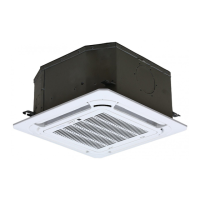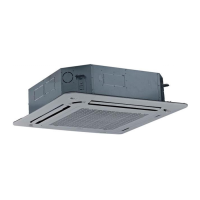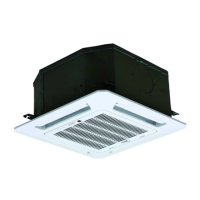6. Refrigerant Pipe Installation
6. Refrigerant Pipe Installation
6.1 Maximum length and drop height
Ensure that the length of the refrigerant pipe, the number
of bends, and the drop height between the indoor and
outdoor units meets the requirements shown in the
following table.
For North America, Australia and Europe 3D Inverter
models:
Capacity(kBtu/h)
Max. Length
(m/ft)
Max. Elevation
(m/ft)
<15
25/82 10/32.8
15-23
30/98.4 20/65.6
24~35
50/164 25/82
36~60
65/213.3
30/98.4
For other models:
Capacity(kBtu/h)
Max. Length
(m/ft)
Max. Elevation
(m/ft)
12
15/49 8/26
18-24
25/82 15/49
30-36
30/98.4 20/65.6
42~60
50/164
30/98.4
Caution:
1. The capacity test is based on the standard length and
the maximum permissive length is based on the system
reliability.
2. Oil traps
If the indoor unit is installed higher than the outdoor unit:
-If oil flows back into the outdoor unit’s compressor, this
might cause liquid compression or deterioration of oil
return. Oil traps in the rising gas piping can prevent this.
An oil trap should be installed every 10m(32.8ft) of vertical
suction line riser.
The indoor unit is installed higher than the outdoor unit
If the outdoor unit is installed higher than the indoor unit:
-It is recommended that vertical suction risers not be
upsized. Proper oil return to the compressor should be
maintained with suction gas velocity. If velocities drop
below 7.62m/s(1500fpm (feet per minute)), oil return
will be decreased. An oil trap should be installed every
6m(20ft) of vertical suction line riser.
The outdoor unit is installed higher than the indoor unit

